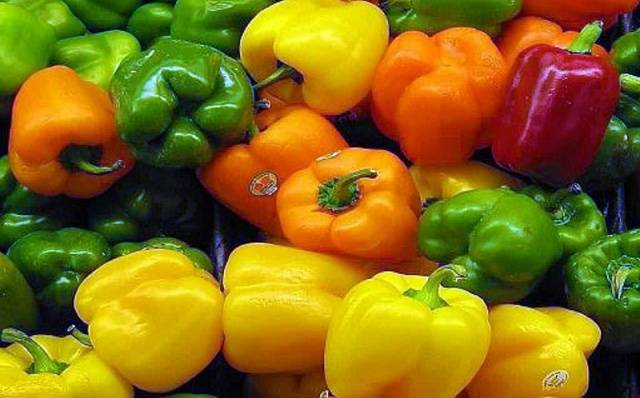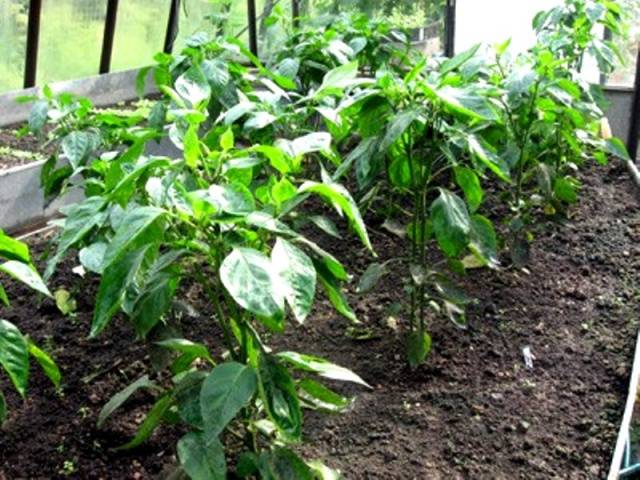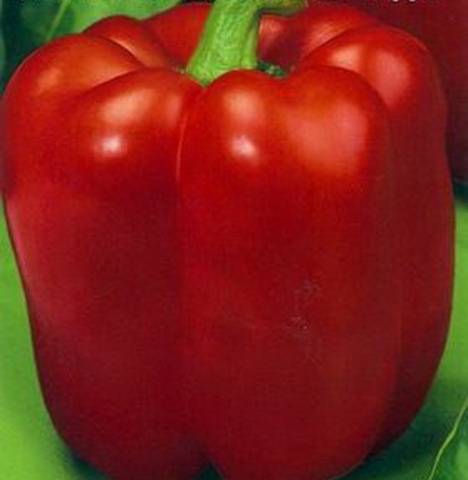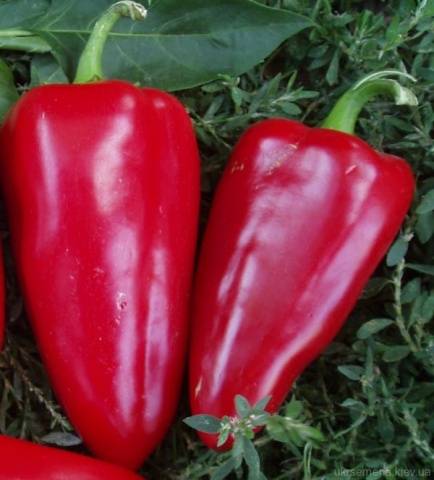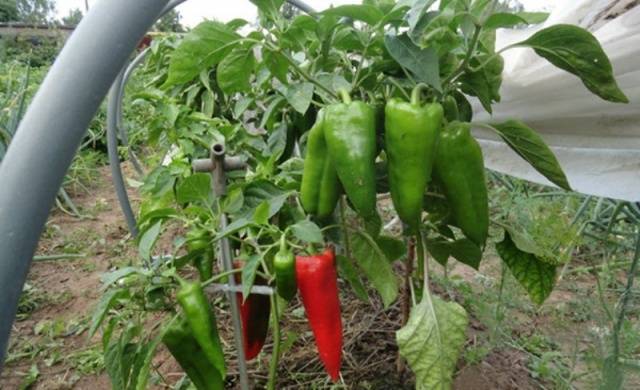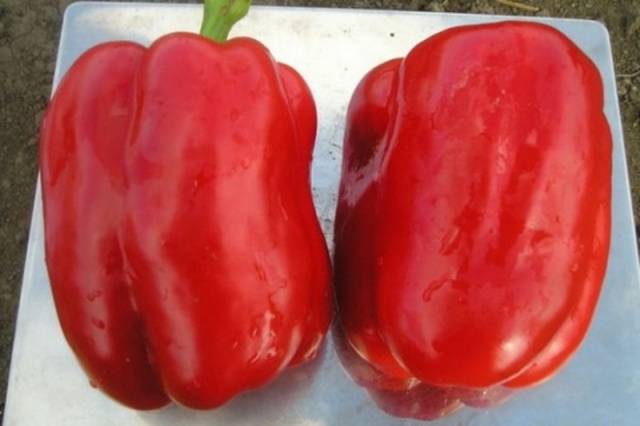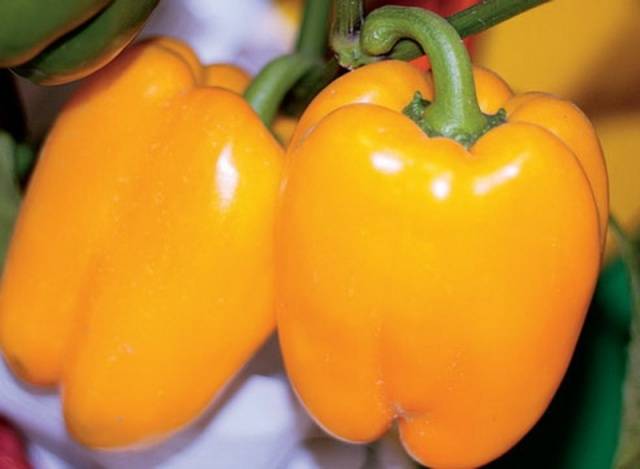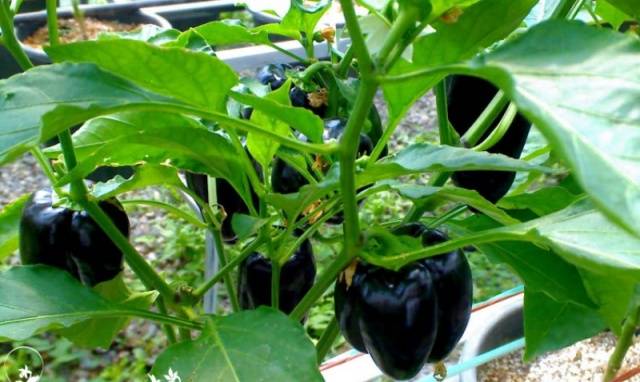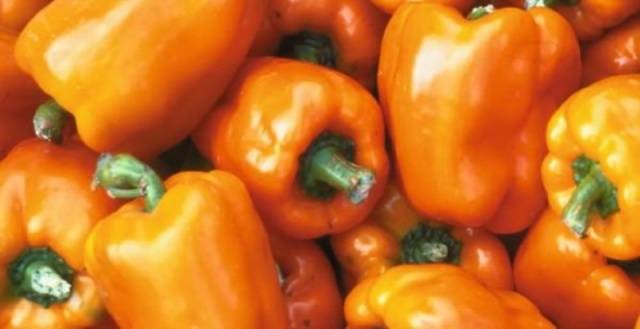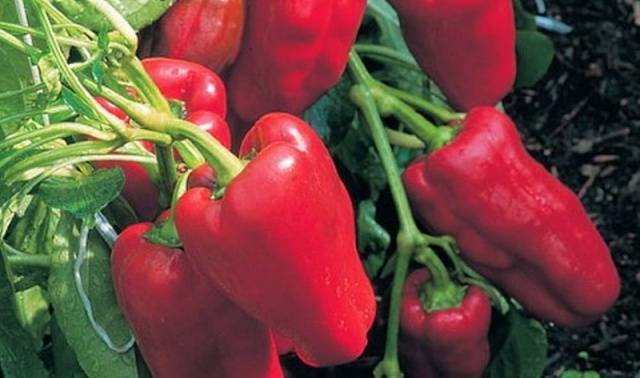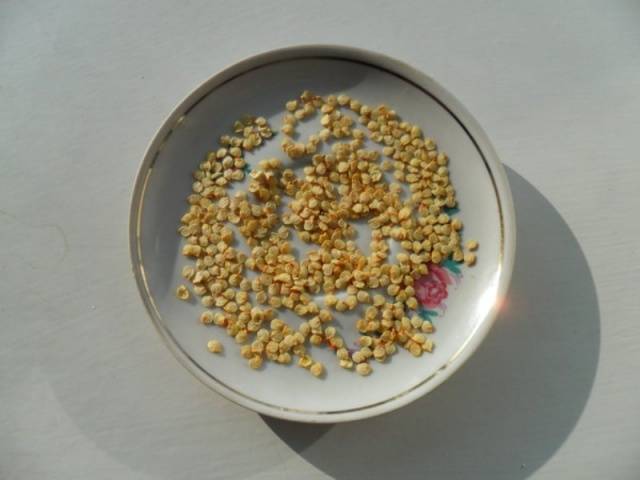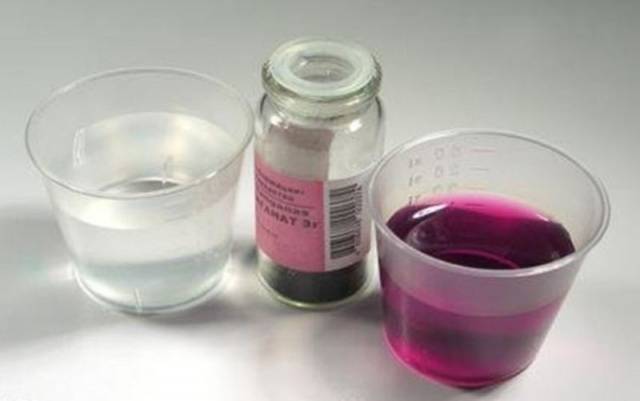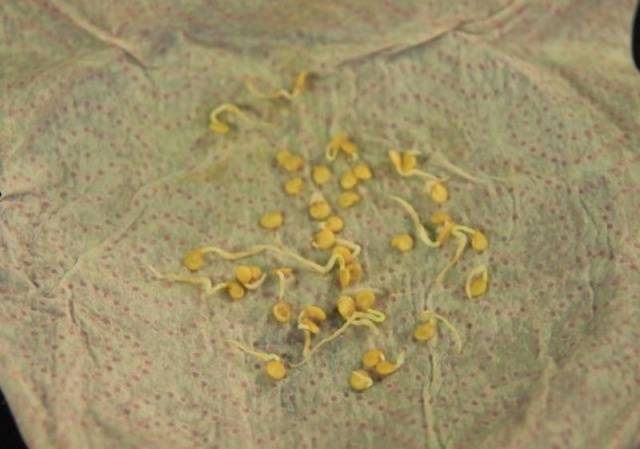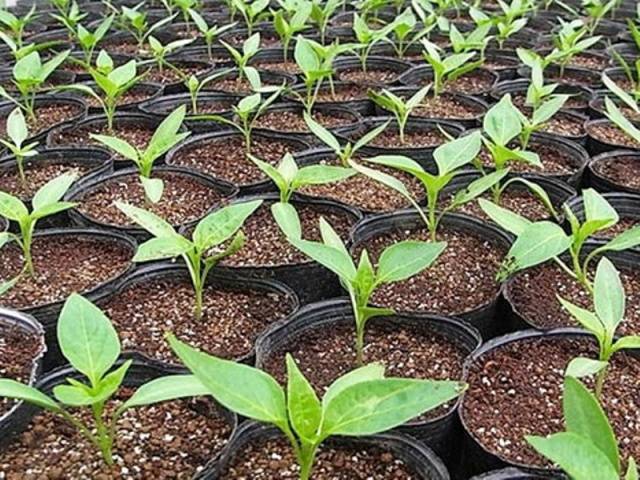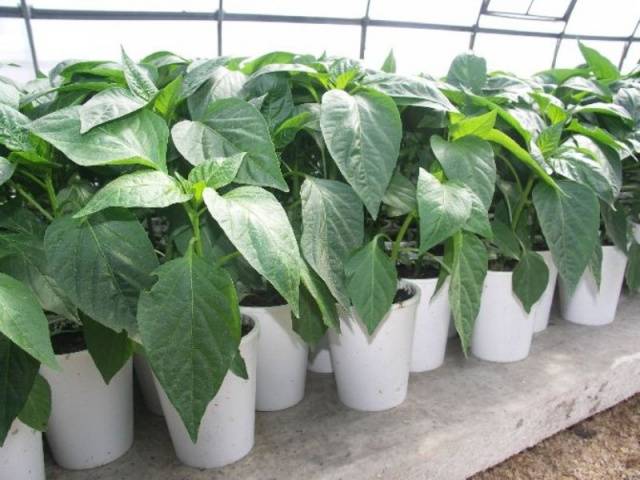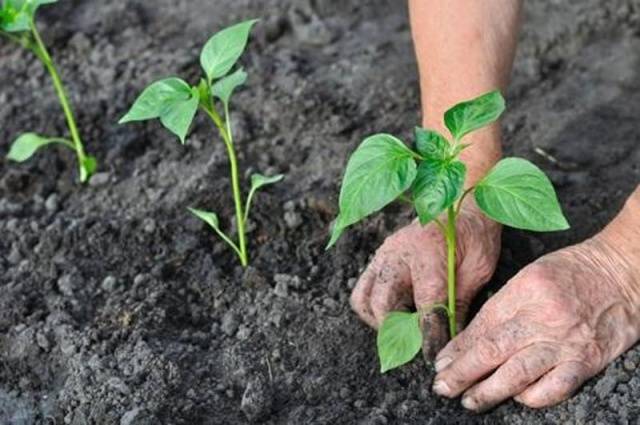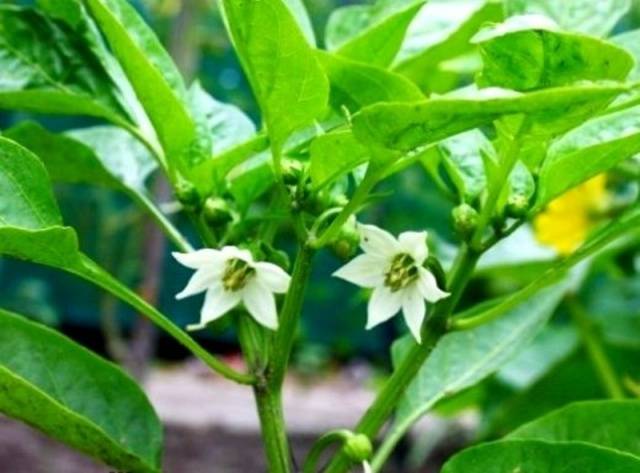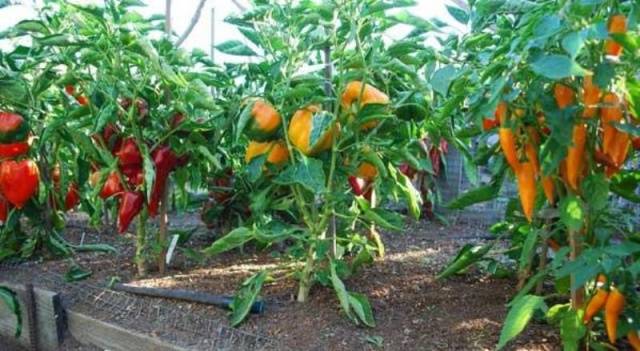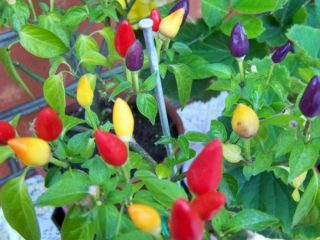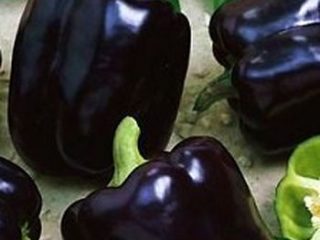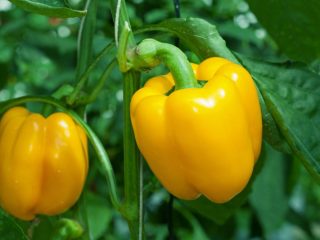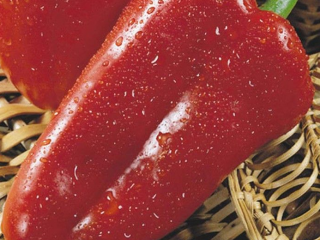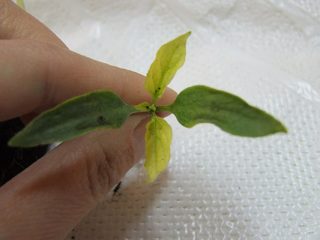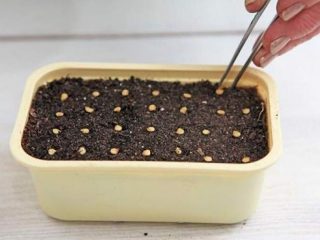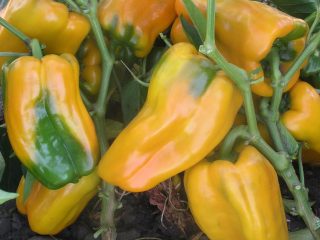Content
In the climatic conditions of the Moscow region, growing sweet, fleshy peppers is a completely feasible task for gardeners. There is a wide selection of seeds on the market that are adapted to this region. There are a large number of varieties that will not only germinate well, but also give a rich harvest. The presence of a greenhouse on a personal plot allows you to grow strong and healthy plants that will bear fruit until frost.
Benefits of growing peppers in a greenhouse
- In protected soil, the plant does not depend on weather conditions.
- An optimal microclimate is created in the soil, which has a beneficial effect on the survival rate of seedlings.
- It is easier to care for plants in a greenhouse - the bushes are less susceptible to diseases and insect attacks.
- In a greenhouse, peppers bear fruit faster and longer.
There is only one drawback - limited space, which often does not have enough space to grow a large number of plants. Therefore, breeders have developed special pepper varieties for greenhouses with low-growing and compact bushes.You can increase the planting density a little and save space for other plants.
Varieties of sweet peppers for greenhouses
Not every pepper is suitable for greenhouses Moscow region will give a good harvest. Varieties that are intended for cultivation in greenhouses tolerate a lack of sunlight and excess air humidity.
California miracle
One of the most unpretentious varieties, with good germination and survival rate. This pepper variety is ideal for your first experience growing peppers in a greenhouse. The fruits are large, fleshy, heavy. Peppers ripen 100 days after mass shoots appear. During the season, up to 2 kg of fruit can be collected from one plant.
Arsenal
Mid-season variety with large (up to 200 g) red fruits. Suitable for fresh consumption, can be preserved well and stored for a long time. The plant is unpretentious and takes root well in a greenhouse.
ox ear
A large-fruited, early-ripening variety that begins to bear fruit 90 days after planting the seedlings in the greenhouse. The fruits are red, large, elongated with a small number of shallow folds. The flesh of the pepper is thick and juicy. The taste is good both fresh and canned.
Hercules
Mid-season pepper variety cultivated in the Moscow region. Undemanding in care and resistant to diseases. The fruits have the shape of an elongated tetrahedron, with juicy and thick pulp. Good for frying and canning. Well kept. The variety bears fruit until late autumn. The plant is low, with few leaves.
Orange King
An early-ripening, unpretentious variety of pepper that produces a bountiful harvest in greenhouses. Recommended planting density is 5-6 bushes per 1 square meter. m. The fruits are large, bright orange.They look beautiful in salads and in jars with homemade preparations. The plant begins to bear fruit 2 and a half months after the seeds sprout.
Bagheera
Very large fruits are colored blue, almost black. By the time the pepper is fully ripe, it acquires a reddish tint. In greenhouse conditions, one bush produces about 2.5 kg of fruit. The taste is good - the flesh is juicy, thick, with a sweet aftertaste. The plant begins to bear fruit 100 days after transplanting the seedlings into greenhouse soil.
Golden calf
A low plant with a pyramidal crown begins to bear fruit abundantly 3 months after the seeds are sown. The fruits are golden in color, very large - up to 400 g. The pulp is thick and juicy. Well suited for canning and pickling.
Pinocchio
An early ripening variety of pepper. In a greenhouse, the plant produces a harvest 80-90 days after germination. The bush is tall, but branches weakly. The bright red fruits can grow up to 17 cm long and 8 cm wide. The flesh of the pepper is thick, juicy and sweetish. This variety is one of the most unpretentious. The seeds germinate quickly and amicably, and the plant easily takes root in a new place.
These pepper varieties are ideal for a greenhouse in the Moscow region. All of them are compact and do not require shaping or gartering.
How to grow sweet peppers in a greenhouse
Growing peppers begins with preparing the soil.The best soil for this plant is a mixture of clay soil with compost, potassium and nitrogen fertilizers. In autumn, soil is poured onto the planting site, onto which a mixture of mineral fertilizers is evenly distributed at the rate of 3-4 kg per 1 m2. The top is covered with a layer of humus mixed with dry leaves, sawdust, ash or charcoal. The top needs to be watered properly and covered with film until spring. At the same time, you can prepare a nutrient substrate for feeding the plants. Manure and turf soil are mixed in a container. Ash is poured and filled with water. This can also be done in a shallow hole - before feeding the plants, the resulting mixture is simply diluted in water.
Seed preparation
Before sowing greenhouse varieties of pepper, there is no need to additionally process and harden the seeds.
The seed preparation process consists of three stages:
- Calibration;
- Disinfection;
- Germination.
Preparing seeds for sowing can begin a week before the expected date of sowing the seeds, that is, in mid-February.
Calibration or sorting is a necessary procedure by which small and dry seeds are rejected. To do this, the seeds need to be filled with warm water. After an hour, those seeds that remain on the surface of the water should be thrown away, and the remaining ones should be dried. The largest ones are selected from these seeds.
Pepper seeds are disinfected by soaking them in potassium permanganate. The solution should be dark. The seeds are placed in a shallow saucer and filled with solution. After three hours, they are washed with clean water and dried. Potassium permanganate not only removes the fungus from the outer seed coat, but also stimulates germination.
Germinating seeds before sowing will help plants sprout faster.Place a damp cotton cloth or gauze folded in several layers on a plate. The seeds are laid out on it and covered with the same cloth. The saucer with the seeds is placed in a warm and well-lit place. You need to keep an eye on that. Keep the fabric damp at all times.
Sowing seeds
After 3-4 days, as soon as the pepper seeds have swollen enough and roots appear on them, you can start sowing. Since seedlings in the future will need dive, then the seeds can be sown in a long narrow box. The height of the sides should not exceed 20 cm.
Sawdust and a little sand are added to the soil for indoor plants. It is recommended to calcine the prepared soil in the oven - this will help get rid of bacteria and harmful microorganisms. The box is filled with moist soil to a depth of 15-16 cm. Shallow (up to 1.5 cm) grooves are made with a knife or finger. The seeds are carefully laid out at a distance of 1-2 cm from each other and covered with earth. You need to pour water on top using a watering can or spray bottle. The box with seedlings is covered with dark, opaque polyethylene and placed in a warm place.
In order for seedlings to appear, the pepper seeds do not need light for the first few days. The soil has a sufficient level of moisture due to natural condensation.
The film is removed as soon as more seeds sprout. Now the pepper sprouts need an additional light source. To do this, you can place the box on the windowsill or hang a fluorescent lamp above it.
Picking
The root system of greenhouse pepper varieties is more sensitive to transplants than other nightshade crops. Picking will provide more space for the growth of seedlings and roots. This procedure is carried out 15-20 days after emergence.During this time, 2-3 leaves will form, and the seedlings become cramped in the box. It is not recommended to wait longer, since the roots of the plants are intertwined, which makes transplanting the seedlings difficult.
Mineral fertilizers (ammonium nitrate, superphosphate, potassium chloride) are added to the disinfected soil for pepper seedlings at the rate of 1 kg of mixture per 1 cubic meter. m of soil.
The soil mixture is laid out in small pots or cups on a drainage layer of fine crushed stone. The volume of a separate container should not be more than 200 g. At the picking stage, the root system is superficial and compact. A large amount of soil can turn sour, and this will lead to diseases. The cups must have holes for water drainage.
Two days before picking, the seedlings need to be watered so that the sprouts can be easily removed from the box without damaging the roots of the plants.
Technology for picking pepper seedlings
- You need to compact the soil in the container, make a hole in the center for the plant and pour water into it;
- Using a spoon, carefully remove the pepper seedling from the box. Choose the healthiest and strongest sprouts;
- The seedling is placed in the hole so that the roots are freely located in it. If the lateral roots have not formed, then it is necessary to pinch the central root. In this case, you need to maintain the same planting depth as before picking. Otherwise, the stem may rot;
- The hole is carefully covered with earth and watered;
- A glass with a pepper seedling is placed in a common container.
The first days after picking, the plants should be left in the same place where they were sown. Then the adaptation process for pepper will be quick and painless. After 10 days, the seedlings need to be fed with the mixture that was prepared in the greenhouse in the fall. Before and after fertilizing, pepper sprouts should be watered generously. You can fertilize with mineral fertilizers or a growth stimulator. 1 g of potassium permanganate, 2 g of copper sulfate and 1-2 g of boric acid are diluted in 10 liters of water. The solution should sit for at least a day, after which you can water the sprouts.
Transplanting seedlings into a greenhouse
5-7 days after picking, pepper seedlings need to be prepared for greenhouse conditions. During the daytime, the box with plants is taken out to the greenhouse. During this time, the sprouts will get stronger, 10-12 leaves will form, new buds will appear in the axils, and it will be possible to begin replanting.
Remove the film from the area intended for planting pepper and dig up the ground. You need to make a bed 50-55 cm wide and water it with a fertilizing mixture three days before planting the seedlings. To prevent soil from falling off the edges of the bed, you can make wooden sides. This will eliminate the need to hill up plants in the greenhouse and make caring for the crop easier. Such a bed will keep its shape well and ensure uniform distribution of water when watering plants.
It is best to transplant plants in the evening, at night. On the morning of planting, seedlings are watered abundantly.
Technology of planting seedlings in the garden
- A hole is made in the garden using a hoe. Its depth should correspond to the height of the pot with the seedling.
- You need to pour water into the hole.
- The seedling is carefully removed along with a lump of earth, then moved into a recess in the garden bed and sprinkled with earth.
- The soil around the sprout needs to be compacted and watered.
Greenhouse varieties of pepper are tolerant of a lack of sunlight. But excessive shading can cause the plant to wither. Therefore, it is better not to plant tall or climbing crops next to pepper in a greenhouse. When choosing “neighbors” for bell peppers, keep in mind that their height should be lower. You can plant greens or root vegetables in close proximity to the pepper bed.
Watering peppers in a greenhouse
During the first 10 days in the greenhouse, pepper seedlings are watered under the root. During this time, they will take root well and new leaves will appear. Now you can feed the plants.
On the 10th day after transplanting the pepper, the soil around the stem is carefully loosened and a feeding solution is poured. This procedure is repeated as soon as the plant blooms.
Caring for plants during fruiting period
The stem of bell pepper is strong and stable, and the fruits are light, so there is no need to tie it up. To get a good harvest, it is recommended to remove the first ovary, which forms in the lower part of the plant. Since the pepper bush is not yet mature enough to bear fruit, the first pepper fruit is a parasite that will drain its strength. For the same reason, it is necessary to promptly get rid of excess shoots that form before the first fork of the plant.
As soon as 4-5 fruits form on the bush, you don’t need to fertilize it. The pepper has entered the fruiting stage and all it needs at this stage is moisture and warmth.
If there is a lack of moisture in the soil, brown spots appear on the fruits, which will lead to the development of gray rot. Therefore, watering must be timely. Water should not stagnate in the soil; to do this, the soil between the rows must be loosened before each watering.
This video explains the basic tricks of growing peppers in a greenhouse:
By the time of abundant fruiting, consistently warm weather will have established outside, and the greenhouse can be ventilated. At this time, you need to ensure that the plants are not attacked by insects. Plants need to be inspected regularly. If signs of pests appear in the greenhouse, it is necessary to remove all the fruits and treat the pepper bushes with a soap and tobacco solution. To protect the roots, the soil around the plants is watered with ammonia, which must first be diluted with water in a 1:1 ratio.
